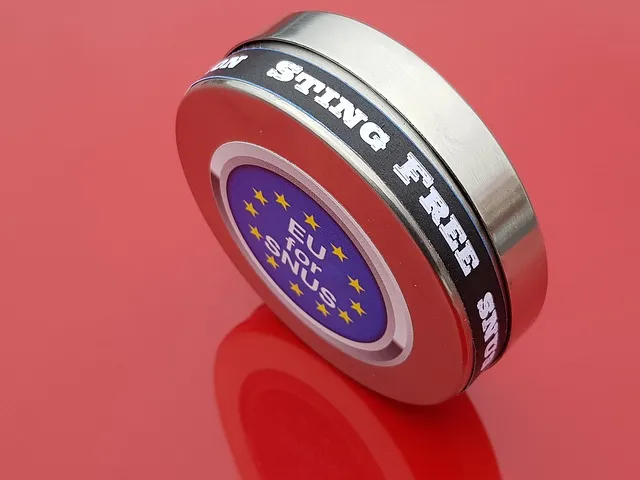Have you ever wondered about the subtle differences between snuff and snus, or how a seemingly simple word can hold such cultural weight? This piece aims to clarify these distinctions and even touch upon a fictional word, “snuns,” to illustrate the fascinating evolution of language.
Snuff Demystified
Snuff, in its simplest form, is finely ground tobacco that is inhaled or “snuffed” into the nasal cavity. This practice has a long and storied history, dating back centuries and spanning continents. Its use was once prevalent among European aristocracy and has seen resurgence in certain communities. But what exactly is snuff beyond finely ground tobacco?
Well, it’s an experience. The initial sensation can be quite intense, a sharp jolt that clears the sinuses and delivers a concentrated dose of nicotine. Different types of snuff are available, ranging from dry to moist, and flavored with everything from fruits and spices to menthol and rose. This variety creates a complex landscape for those who appreciate this particular form of tobacco enjoyment.
The production of snuff involves a meticulous process. The tobacco leaves are carefully selected, cured, and then ground to a specific consistency. Different grinds and moisture levels cater to different preferences. Some prefer a very fine, dry snuff that’s easily inhaled, while others opt for a coarser, moister variety that lingers longer in the nose.
Beyond the sensory experience, snuff is tied to history and culture. In the 18th and 19th centuries, ornate snuffboxes were a symbol of wealth and status. Taking snuff was a social ritual, a shared moment of pleasure and conversation. While snuff’s popularity has waned in some regions, it remains a cherished tradition for others.
Snus Unveiled
Snus, often confused with snuff, presents a different approach to enjoying tobacco. Originating in Sweden, snus is a moist powder tobacco that is placed under the upper lip. It’s not inhaled, and it delivers nicotine through the oral mucosa.
What sets snus apart from other forms of smokeless tobacco? Several key aspects contribute to its unique character. First, the manufacturing process involves steam-curing the tobacco, which results in lower levels of nitrosamines, harmful compounds found in some other tobacco products. Second, snus is typically portioned into small pouches, making it cleaner and more convenient to use.
Snus comes in a variety of flavors and strengths, catering to a wide range of preferences. From traditional tobacco flavors to mint, berry, and even whisky, there’s a snus to suit almost any taste. The nicotine content also varies, allowing users to choose a strength that meets their individual needs.
The Swedish tradition of snus goes back centuries, and it remains a popular alternative to smoking in Sweden. It’s considered a part of Swedish culture and is often associated with a more refined and discreet way to enjoy tobacco.
The Curious Case of “Snuns”
Now, let’s introduce a fictional element into the mix – “snuns.” This word, as it stands, doesn’t exist. However, we can use it to illustrate how language evolves and how new words are created.
Imagine “snuns” as a hypothetical hybrid of snuff and snus. Perhaps it’s a type of tobacco that is designed to be both inhaled and placed under the lip. Or maybe it’s a new cultural phenomenon, a blend of traditions from different regions.
The creation of a new word often reflects a need to describe something new or a shift in cultural norms. “Snuns,” in our hypothetical scenario, could represent an innovative approach to tobacco consumption or a merging of different cultural practices.
Furthermore, the sound of the word itself contributes to its potential meaning. “Snuns” sounds somewhat similar to both “snuff” and “snus,” creating an immediate association with these existing words. This phonetic connection helps to establish a sense of familiarity and allows the listener to quickly grasp the general concept.
The evolution of language is a constant process. New words are coined, old words take on new meanings, and the way we communicate continues to evolve. “Snuns,” as a fictional example, serves as a reminder that language is a dynamic and ever-changing phenomenon.
Final Thoughts
So, we’ve differentiated between snuff and snus. Snuff is inhaled, snus is placed under the lip, and “snuns” is a figment of our linguistic imagination. But, more importantly, we’ve considered the cultural and historical context surrounding these words. Language shapes our understanding of the world, and even seemingly simple words can carry a wealth of meaning.
Ultimately, whether you’re drawn to the historical ritual of snuff, the discreet enjoyment of snus, or the hypothetical possibilities of “snuns,” remember that language is a powerful tool for connection, understanding, and even a little bit of playful invention.

